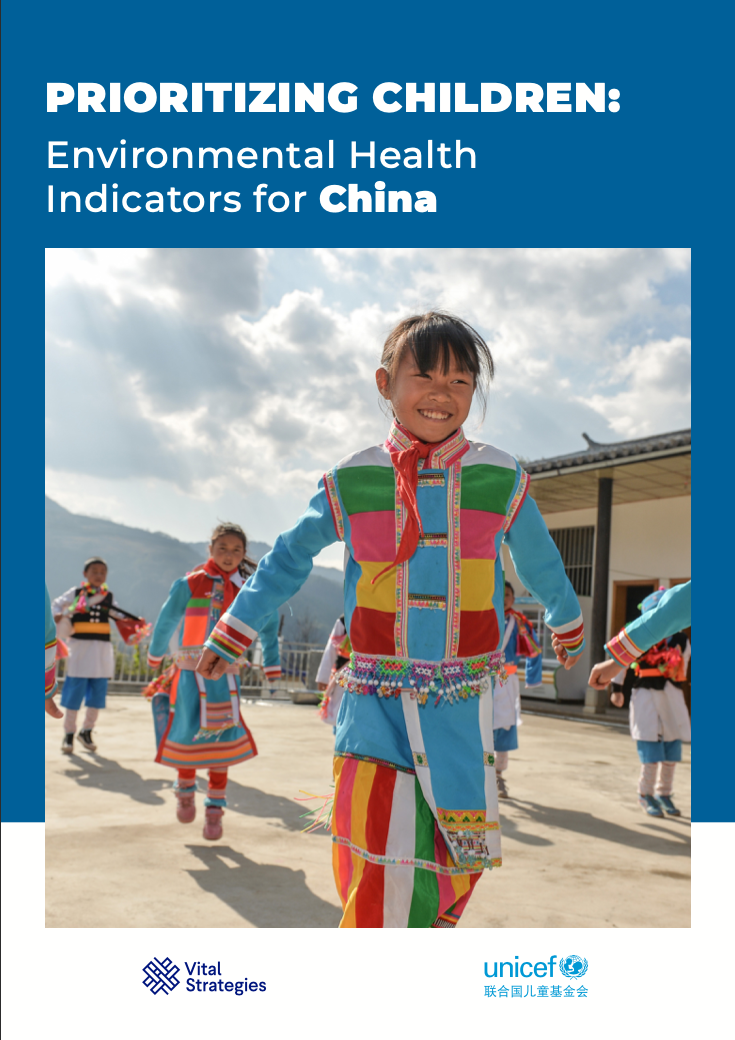A critical first step toward providing a safer and healthier environment for children
Globally, more than one in four childhood deaths under the age of five are attributable to unhealthy environments. Indicators that systematically track, assess and report on the risks and impact of the environment on children’s health can be used to:
- Quantify the magnitude of a public health problem
- Detect notable trends in environmental exposures and health outcomes
- Identify subpopulations at risk of environmentally attributable illnesses
- Generate hypotheses about the relationship between health and the environment
- Direct and evaluate measures for control and prevention
- Facilitate the development of evidence-based policies
Researchers increasingly use children’s environmental health indicators (CEHIs) to link environmental factors and adverse children’s health outcomes. In this report, we identify some of the most important children’s environmental health indicators for China, based on a rigorous methodology and process. We also provide more detail on environmental risk factors that are potential hazards of children’s health in China: climate change, air pollution, industrial waste pollution, the built environment, environmental tobacco smoke and food safety.
The CEHI project represents a critical first step toward providing a safer and healthier environment for children in China. It must be followed by efforts to ensure that routinely collected, high-quality data to support each indicator can be captured, analyzed and shared with relevant stakeholders to guide policy that benefits children’s health.
Published: August 31, 2022
Sign up to receive our monthly Research Roundup email, which offers a selection of new public health research from major journals.
Recent Abstracts
Childhood Lead Exposure Prevention: Assessment Of Blood Lead Surveillance Capacity Maharashtra, India
UK PACT : Enhancing Sustainable Urban Mobility in Surabaya and Makassar
Stage at diagnosis and survival by stage for the leading childhood cancers in…
Short-term association of particulate matter and cardiovascular disease mortality in Shanghai, China between…
Information About New Federal Regulations for Opioid Treatment Programs (OTPs)
Centering Country Ownership and Leadership: The Data for Health Initiative’s Approach
Mass Media Campaigns
Tobacco Imagery in Movies and Web Series Streaming in India and Their Compliance…
Data for Health: Advancing Gender Equity
The Index of Tobacco Control Sustainability
